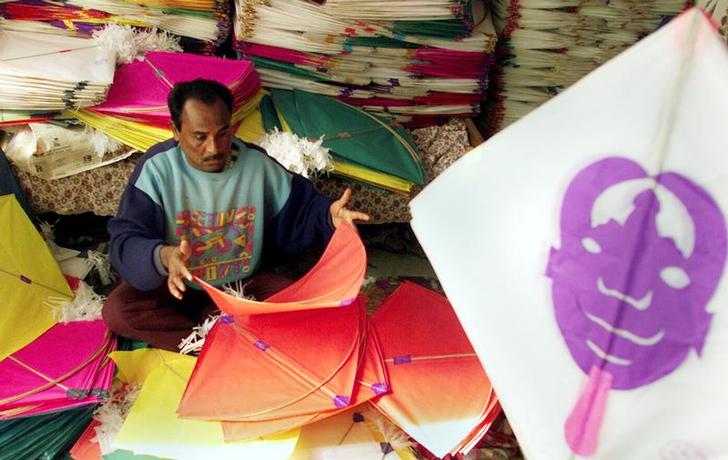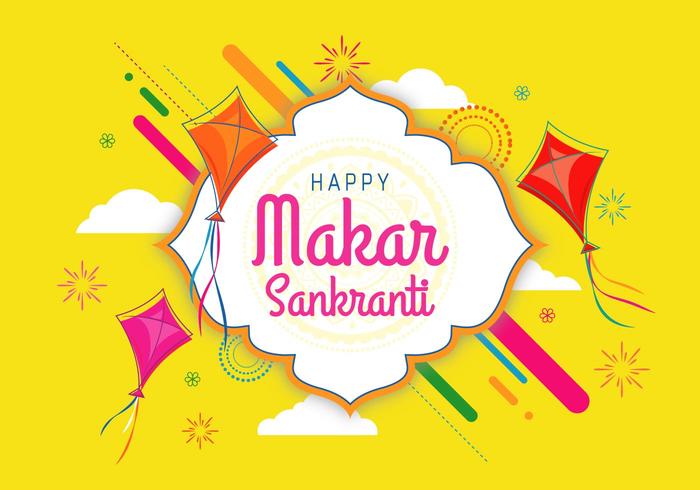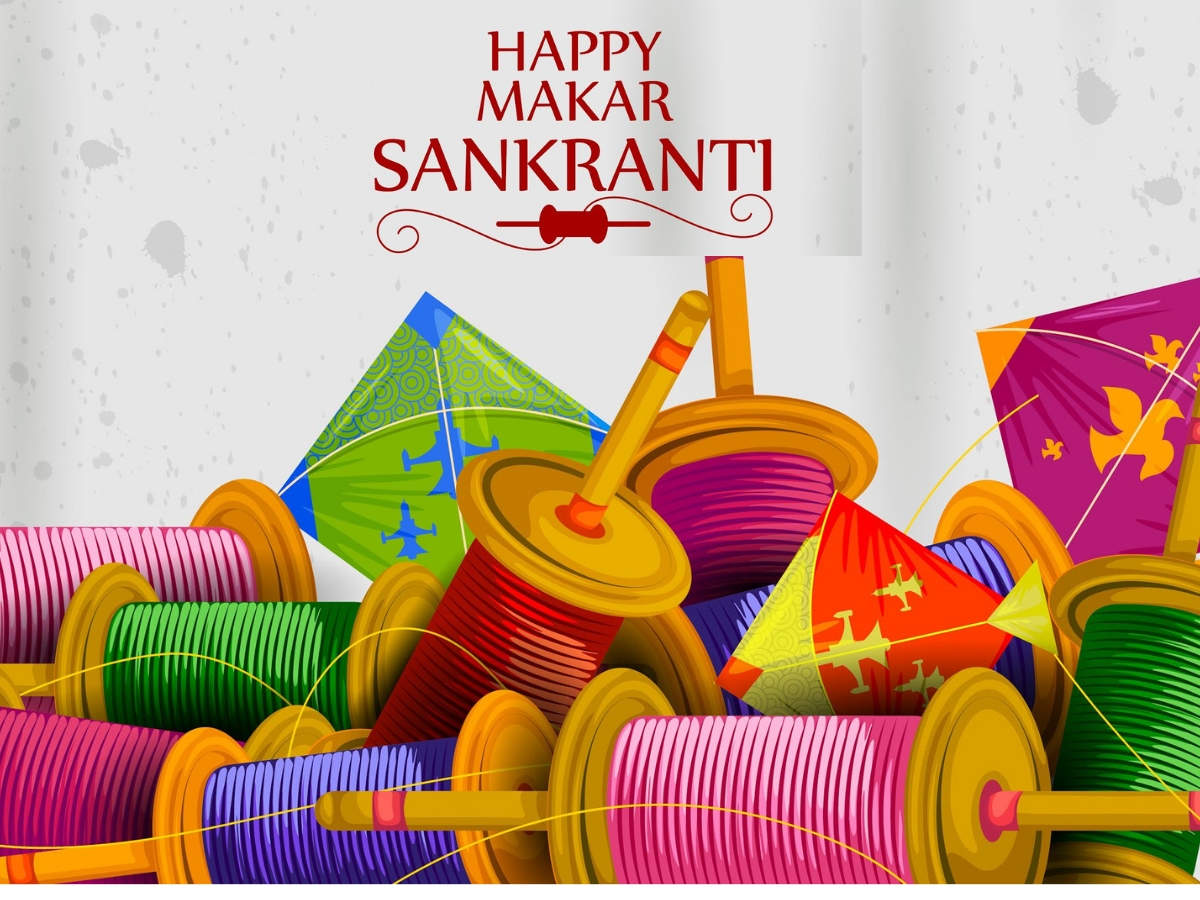Makar Sankranti or Uttarayan or Maghi or simply Sankranti, also known as Paush Sankranti in Bangladesh, is a festival day in the Hindu calendar, dedicated to the deity Surya (Sun). It is celebrated every year on the day the Sun enters Capricorn which corresponds to the month of January according to the Gregorian calendar.
It marks the first day of the Sun’s transit into Capricorn (Capricorn), marking the end of the month with the winter solstice and the beginning of longer days.
Makar Sankranti is one of the few ancient Indian festivals that are celebrated according to solar cycles, while most festivals are determined by the lunar cycle of the lunisolar Hindu calendar. As such, it almost always falls on the same Gregorian date every year (January 14), except in some years when the date for that year (15 January) changes by one day. As a result, it may fall on different dates of the Hindu calendar each year.
The festivities associated with Makar Sankranti are known by various names like Magh Bihu in Assam, Maghi (before Lohri) in Punjab, Haryana, and Himachal Pradesh, popular among both Hindus and Sikhs, Socrates in Central India, Pongal in Tamil Nadu, Uttarayan. Gujarat, Uttarakhand and Uttar Pradesh, Ghughuti in Uttarakhand, Makar Sankranti in Odisha, Karnataka, Maharashtra, Goa, West Bengal (also known as Paush Sankranti), Uttarakhand and Uttar Pradesh (also known as Khichdi Sankranti) or Andhra Pradesh and as Sankranti in Telangana, Magha Sankranti (Nepal), Songkran (Thailand), Thingyan (Myanmar), Mohan Songkran (Cambodia), and Shishur Sankranti (Kashmir). On Makar Sankranti, the Sun God is worshiped along with the Lord. Vishnu and Goddess Lakshmi throughout India.
Makar Sankranti is celebrated with social festivities such as colorful decorations, rural children going from door to door, singing, and in some areas asking for feasts, melas (fairs), dance, kite flying, bonfires, and feasts. Magh Mela, Indologist Diana L. According to one, mentioned in the Hindu epic Mahabharata.
Many observers visit sacred rivers or lakes and bathe in a ceremony of thanksgiving to the Sun. Every twelve years, Hindus celebrate Makar Sankranti along with the Kumbh Mela—one of the world’s largest mass pilgrimages, attended by an estimated 40 to 100 million people. In this event, they pray to the Sun and take a bath at the Prayag confluence of the Ganges River and the Yamuna River, a tradition attributed to Adi Shankaracharya.
Also Read: How are you meaning in Hindi
Makar Sankranti Date
Makar Sankranti is determined by the solar cycle of the Hindu lunar calendar and is observed on a day that usually falls on January 14 of the Gregorian calendar, but sometimes on January 15. It marks the arrival of the long days. Makar Sankranti falls in the solar month of Makara in the Hindu calendar, and the lunar month of Magha (in some parts of India the festival is also called Magha Sankranti or Magha festival).
It is the winter solstice for India and the longest of the year. The long night signifies the end of the month, a month called Paush in the lunar calendar, and Dhanu in the solar calendar in the Vikrami system. The festival celebrates the first month with consecutive long days.
There are two different systems for calculating Makar Sankranti date: Nirayana (equinox, without adjustment for the constellation’s precession) and Sayana (with adjustments, tropical). The date of 14 January is based on the Nirayana system, while the Sayana system usually calculates it to be around 23 December according to most doctrine texts for the Hindu calendar. Due to adjustments in the calendar over the years, the date of the festival falls on January 14 or 15.
Makar Sankranti Significance
Makar Sankranti is celebrated every year in the month of January to mark the winter solstice. The festival is dedicated to the Hindu religious sun god Surya. This significance of the sun is found in Vedic texts, particularly the Gayatri Mantra, a sacred hymn of Hinduism that is found in its scripture called the Rigveda.
Makar Sankranti is considered important for spiritual practices and accordingly, people take a holy dip in rivers, especially Ganga, Yamuna, Godavari, Krishna, and Kaveri. It is believed that taking a bath leads to the destruction of virtue or past sins. They also pray to Surya and give thanks for their successes and prosperity. A shared cultural practice found among Hindus in different parts of India is the making of sticky, bonded sweets, especially from a sugar base such as til (sesame) and gur (jaggery, jaggery).
This type of dessert symbolizes living together in peace and joy, despite the uniqueness and differences between individuals. For much of India, this period is a part of the rabi harvest and the early stages of the agricultural cycle, where crops have been sown and farm labor is mostly over. Thus the time marks a period of socializing and families enjoying each other’s company, tending the cattle, and celebrating around the bonfire, in Maharashtra the festival is celebrated by flying kites.
Also Read: Rohit Shetty (Director) | Biography | Age | Career
Makar Sankranti is an important pan-India solar festival, known by different names although celebrated on a single date, sometimes for several dates around Makar Sankranti. It is known as Pedda Panduga in Andhra Pradesh and Telangana, Makar Sankranti in Karnataka and Maharashtra, Pongal in Tamil Nadu, Magha Bihu in Assam, Magha Mela in some parts of Central and North India, Makar Sankranti in West, Maghara Valaku in Kerala. Is. , and by other names.
Makar Sankranti Image



| Homepage | Click Hear |

